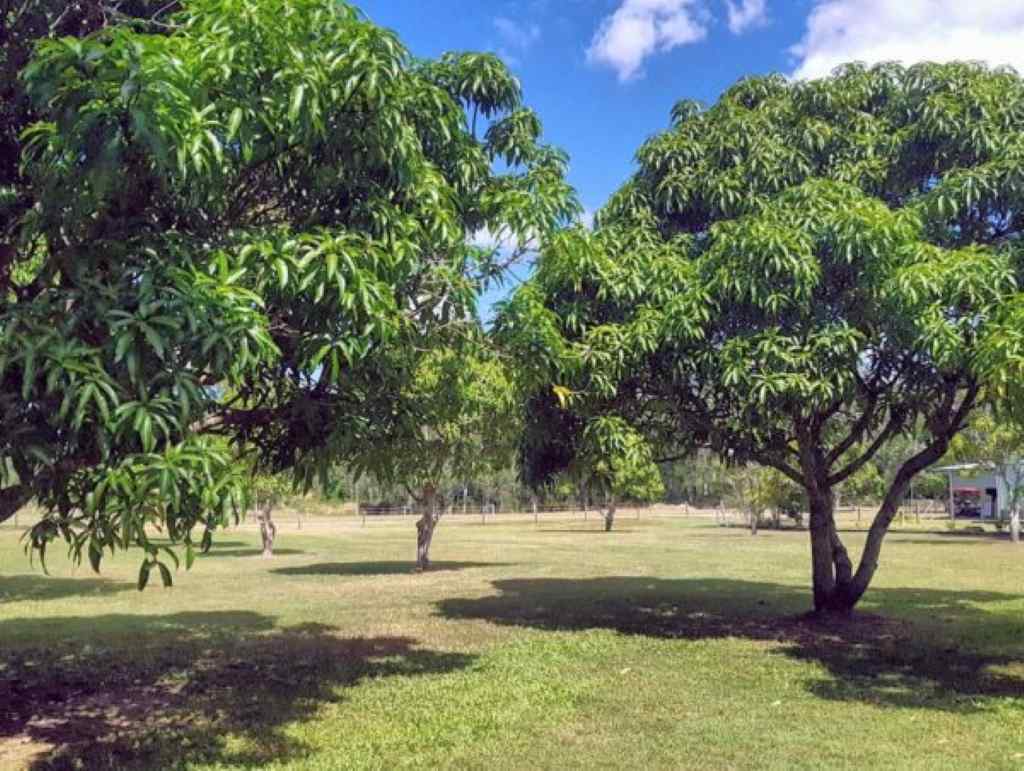Plant a mango tree in the ground
Planting a mango tree is a thrilling experience that adds both beauty and bounty to any landscape. Whether you’re a seasoned gardener or a newbie enthusiast, the process of growing a mango tree from a sapling to a healthy tree is quite satisfying. Atascocita Tree Service understands the need for proper planting techniques for mango trees in the region’s subtropical environment. In this detailed guide, we’ll lead you through how to plant a mango tree in the ground. With our expert advice and insights, you’ll discover how to establish the ideal climate for your mango tree to grow and provide delicious mangoes for years to come. Prepare to embark on a voyage of growth, greenery, and culinary delights as we explore the technique of planting a mango tree in the ground.
The importance of planting a mango tree
Planting mango trees is important for both the environment and the economy. Mango trees benefit the environment by providing habitat for a variety of wildlife species. Their dense foliage provides shade, preventing soil erosion and keeping moisture levels in the soil. Mango trees also serve an important role in carbon sequestration, reducing climate change by absorbing carbon dioxide from the atmosphere.
On an economic level, mango agriculture employs millions of people globally. The fruit is highly valued in international markets, helping to boost global trade and economic growth in the producing regions. Furthermore, mango trees provide a stable source of revenue for small-scale farmers, particularly in tropical and subtropical climates where they thrive. Furthermore, planting mango trees improves food security by diversifying agricultural production and producing nutritious fruits high in vitamins, minerals, and antioxidants. Overall, the benefits of planting mango trees transcend beyond horticulture to include environmental protection, economic development, and food sustainability.
Selecting the Mango Tree
Choosing the proper mango tree variety is critical for successful development. Consider climate compatibility and soil conditions while selecting a variety for your location. In Atascocita, where the climate is subtropical, choose types like as ‘Keitt’ or ‘Haden,’ which are noted for their adaptability to warmer temperatures. These kinds thrive in the region’s climate and produce high-quality fruit.
Before making your decision, look at the characteristics of each type, such as fruit size, flavor, and ripening time. Some kinds are more disease-resistant or tolerant of specific soil types, so consider these variables as well. By selecting a variety well-suited to your local conditions, you will set the groundwork for a good mango harvest and enjoy delicious mangoes for many years.
Tools needed for planting a mango tree
- Shovel
- Garden Hoe
- Garden Trowel
- Watering Can or Hose
- Mulch
How to plant a mango tree in the ground
Choose a Good Spot: For best results, choose a sunny location with well-drained soil.
Prepare the Planting Hole: Dig a hole twice the width and depth of the root ball. Create a loose bed for the roots by loosening the soil with a shovel.
Remove the Tree from its Container: To dislodge the root ball, gently tap the container’s sides. Remove the tree gently, being careful not to damage the roots.
Place the Tree in the Hole: Place the tree in the center of the hole, making sure it is straight and level. Spread the roots in all directions to promote outward development.
Backfill with dirt: Fill the hole with dirt and carefully firm it around the roots. Water the tree thoroughly to settle the soil and eliminate air pockets.
Mulch and Water: Apply a layer of mulch around the tree’s base to keep moisture in and weeds out. Water the tree regularly, keeping the soil consistently moist but not waterlogged.
By following these steps, you’ll ensure the successful establishment of your mango tree for years of fruitful harvests.
Pruning and Training of mango tree
Pruning and training are crucial procedures for the proper growth and development of a mango tree.
Shaping the Young Tree: Start pruning soon after planting to shape the tree’s growth. Remove any dead, damaged, or crossed branches to promote a healthy, open canopy structure.
Promoting Healthy Growth: Prune the tree once a year to keep its shape and size consistent. Remove crowded branches and thin out the canopy to enhance air circulation and light penetration.
Encouraging Fruit Production: Because mango trees produce fruit on mature wood, it is critical to promote the development of productive branches. Prune to reduce extra vegetative growth and promote the development of fruit spurs.
Training the Tree: Stake or trellis the tree to support its growth and prevent tilting or breaking. Guide the main trunk to form a straight and erect structure capable of supporting the weight of future fruit crops.
When is the best time to plant a mango tree?
Mango trees are ideally planted in the late winter or early spring months. This scheduling allows the tree to establish itself before the growing season begins, giving it enough time to create a robust root system and adjust to its new surroundings. Planting around this time also aligns with the tree’s natural development cycle, creating ideal circumstances for root growth and establishment.
Planting can be done in late fall in areas with mild winters, but avoid planting during periods of frost or excessive cold. Planting in late winter or early spring gives your mango tree the highest chance of success because it will have the complete growth season to establish itself.
Related Posts:
Safety measures while planting a mango tree
When planting a mango tree, it is critical to take safety precautions to ensure a smooth and injury-free process.
Wear protective Gear: Gloves will protect your hands from cuts and abrasions while handling equipment and plant materials. Wear closed-toe shoes to keep your feet safe from damage.
Use Proper Tools: To reduce the danger of an accident, use sharp, well-maintained tools. Do not use tools with dull blades or damaged handles.
Be Aware of Your Surroundings: Before you dig, be aware of any subterranean utilities, such as water pipes and electrical wires. Always contact the utility company to designate the position of these utilities before beginning excavation.
Lift with Proper Technique: To avoid back strain or injury, utilize proper lifting techniques while carrying heavy objects like soil bags or mulch. Bend your knees and lift using your legs, not your back.
Stay Hydrated: Planting trees is a physically tough job, so drink plenty of water throughout the process.
FAQS
When is the ideal season to grow mango trees?
Mango trees are best planted in late winter or early spring so that they can establish themselves before the growing season begins.
How long does it take for a mango tree to produce fruit?
Mango trees normally begin producing fruit three to five years after planting, depending on the species and growing conditions.
Do mango trees need special care?
While mango trees require little upkeep, they do benefit from regular watering, fertilizing, and pest control to promote optimal growth and fruit output.
Can I plant mango trees in containers?
Yes, mango trees may be grown in containers if they receive enough sunlight, water, and nutrients. To achieve the greatest results, choose dwarf or patio varieties.
How can I protect my mango tree from frost?
During cold weather, wrap the tree with frost cloth or blankets to prevent frost damage. Consider applying frost protection sprays or installing frost protection devices.
Conclusion
To summarize, planting a mango tree in the ground is a gratifying endeavor with several benefits for both the environment and individuals. You can ensure that your mango tree grows and produces fruit successfully by selecting the suitable variety for your climate and soil conditions, carefully preparing the planting site, and giving regular care and maintenance. Mango trees not only promote biodiversity and environmental conservation, but they also give economic prospects for growers and communities. With correct pruning and training procedures, you may shape the tree’s growth and increase fruit output. Finally, the satisfaction of picking ripe, luscious mangoes from your own tree is unparalleled. Whether you’re a seasoned gardener or a novice enthusiast, planting a mango tree is an investment in the future, yielding delicious fruits and enhancing the beauty of your landscape for years to come.





